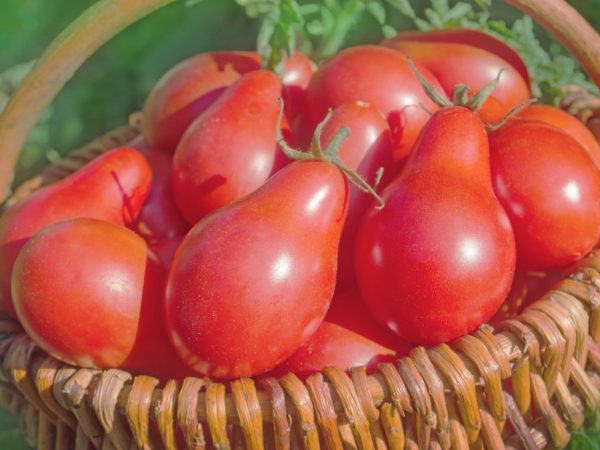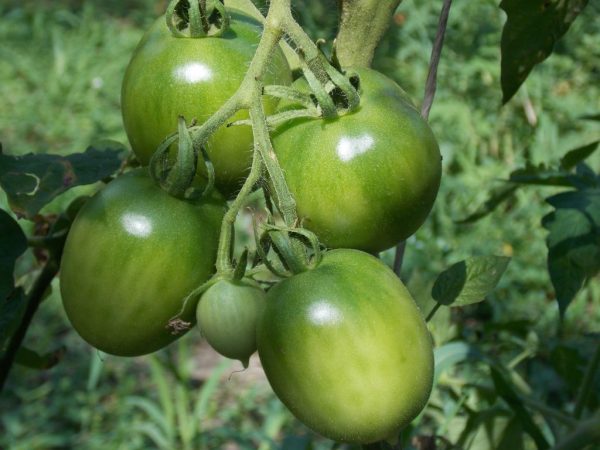Characteristics of Japanese varieties of tomatoes
Japan is a country with an amazing crop culture. The Land of the Rising Sun is the leader in rice cultivation. But, not many people know that tomatoes occupy a separate place in the agricultural activities of the Japanese. Japanese tomato varieties have not only excellent yield indicators, but also amazing taste.

Characteristics of Japanese varieties of tomatoes
Japanese-bred tomatoes include a wide variety of hybrids. Today, every gardener can choose a variety suitable for growing with certain external and taste characteristics.
Popular varieties of Japanese tomatoes
The main suppliers of Japanese varieties are two firms: Sakata and Kitano. Reviews say that these suppliers have earned the respect of customers not only for the quality of planting material, but also for affordable prices. The Japanese tomato seed line includes a wide variety of hybrids, suitable not only for outdoor use, but also for growing in greenhouses. Indoor tomatoes are also popular. But, due to different climatic features, not all Japanese varieties have received their recognition in Russia. Best of all, they have taken root with domestic gardeners:
- tomato Japanese Crab;
- Japanese Truffle;
- Japanese creeping tomato;
- Senkar tomatoes;
- Chisato tomatoes;
- Japanese Rose.
Tomatoes TMAE 683 f1 deserve special attention. This hybrid is ideal for domestic climatic conditions. Can be grown both outdoors and in greenhouses.
The main advantage of this variety is that TMAE fruits can be tied even during sudden cold snaps. In addition, the yield of the Japanese is impressive. From one bush, you can collect up to 5 kg of tasty, uniformly shaped vegetables.
Characteristics and description of Japanese tomatoes
Growing Japanese tomatoes is a very interesting and entertaining activity. Today, each owner of a land plot can choose a variety suitable for certain characteristics. Some of the overseas hybrids have low growth rates and can be grown in a room or on a balcony. Others are for street drop-off only.
A large assortment of "Japanese" can scare, confuse and mislead a novice gardener. The tomato varieties recommended by sellers do not always meet the requirements that the consumer expects from them. Therefore, experts recommend that you first familiarize yourself and study well the "novelty" of the domestic market before making your choice.
Japanese Crab
The popularity of the Japanese Crab tomato is due to the taste of its fruits. Such a tomato is very sweet, its pulp is dense and has almost no seeds. This description of the vegetable makes it ideal for preparing cold snacks. In addition, the connection between the name of the variety and the vegetable itself is also interesting.The fact is that the shape of the tomato resembles a crab, since the fruit of this hybrid is slightly flattened and has noticeable protrusions on top.
Domestic gardeners growing this Japanese tomato variety distinguish the following features:
- The bush of such a tomato is tall. The stem height, with proper care, can reach 160-170 cm.
- This "Japanese" has large thick green leaves. But, impressive landscaping does not overshadow the brushes of pink tomatoes.
- The yield is high and long lasting. When grown in a greenhouse, you can have a good supply for the winter, because such a variety actively yields a harvest until mid-autumn.
- Resistance of immunity to diseases and pests. With proper care, the risk of rot, tobacco mosaic and other diseases is minimal.
A person who decided to plant this hybrid on his land plot must go through the standard period of growing seedlings from seeds and diving them. It is not worth starting sowing in open ground right away, because the chances of emergence of seedlings are minimal.
Japanese Truffle

Fruits of this variety can change their color.
The characteristic of the Japanese Truffle tomato is its merit. The fact is that the fruits of this plant, in addition to their amazing taste, can change their color depending on the duration of ripening. So, a tomato tied on a cluster can be pink, but after a few days - bright red. In addition, overripe, such a tomato turns black.
The description of this variety also has its own characteristics. The bush of this hybrid is vigorous, with dense greenery. The fruit is shaped like a pear. Their pulp is dense, with a minimum number of seed chambers. The skin is not prone to cracking. These qualities of tomatoes make them suitable for transportation and long-term storage.
Japanese creeping
Description of the Japanese creeping tomato makes this variety unlike other varieties of tomato. Of the "Japanese", this is the shortest tomato. Its peculiarity is associated with the size of the shoots, which are spread 60-70 cm wide. Such a bush is small in height and rarely exceeds 25 cm in height.
Numerous reviews of this hybrid are associated with its appearance during the flowering period. The fact is that its flowers are bright yellow. Blossoms, like golden jewelry, decorate a sprawling green bush. In addition, later fruit ovaries also attract attention. Small clusters of red tomatoes, weighing no more than 100 grams, resemble the world-famous Cherry tomatoes. In addition, these mini tomatoes are great for preservation.
Senkara
No less popular in Russia and the near abroad are the Senkara or Japanese Rose varieties. These hybrids are of medium stature. They require molding into 1-2 stems when grown in an open field or in a greenhouse. The fruit cluster of the Senkara variety has an impressive size and weight. A "bunch" of large pink tomatoes, weighing 250-280 grams, ripens by mid-June. Indicators of the Japanese rose are more modest. The brush of this hybrid includes 5-6 bright red tomatoes, weighing no more than 140 grams.
Chisato
Special attention should be paid to the hybrid "Chisato". Among the people, such a tomato has deservedly received the title of a giant. The fact is that this powerful plant actively grows and bears fruit in any climatic conditions. The only thing that such a "Japanese" does not like is frost. The variety gives a good harvest on any soil, regardless of rainy or hot summers. Up to 10 kg of fruit can be harvested from one bush. In addition, the brush holds only 5-6 tomatoes, weighing 250-280 grams.
Features of growing tomatoes
The tomato market is large and in demand. Therefore, there will be no problems with the purchase of seeds. Having decided to plant Japanese tomatoes, you need to be well versed in agrotechnical features. Indeed, some of their foreign plants have their own, individual characteristics, taking into account which you can achieve the desired yield.

You should carefully read the features of cultivation.
Buying seeds and sowing them in infertile soil is a rash act. Every gardener, experienced or anyone who just knows the world of plant growing, should know about all the intricacies of planting tomatoes. Therefore, you should select suitable soil for the purchased hybrid and prepare the seeds for planting. For growing seedlings, a mixture of ordinary earth with humus is suitable. Seeds sown in pots are covered with polyethylene and placed in a warm place until shoots appear.
Depending on the variety, the seedlings are prepared for picking 90-140 days after sowing. Transplanting to a new place, on the street or in a greenhouse, also has its own characteristics.
Expert advice
- Introduce mullein into garden soil. Fertilizing the soil with manure will give the planted plant the trace elements necessary for active growth and fruiting.
- When digging up the soil in the spring, apply a complex mineral fertilizer to the soil.
- Add ammonium nitrate to the soil.
Fertilizing garden soil in advance allows plants to quickly take to new conditions for themselves without various risks and problems. When the seedlings get stronger and begin to throw out flowers, it is necessary to pay more attention not to fertilizers, but to watering at the root.
Other preventive measures are also important, such as loosening the soil and ventilating the greenhouses. Foreign varieties of tomatoes suffer no less from lack of air than those varieties that belong to domestic selection. Systematic loosening of the top layer of the soil, as well as airing the greenhouse, will save the seedlings from problems with the formation of rot and increase the yield.
Diseases and pests of Japanese tomatoes
Most of the plants of the country of the rising sun are not susceptible to frequent infections with diseases and do not suffer from pest attacks.
But, errors in care can still "play" against the planted culture. The declared resistance of immunity without preventive spraying, greenhouse ventilation and other care features is significantly reduced. Therefore, you should be aware of what problems may arise in the path of a gardener in growing tomatoes. Most often, tomato varieties from the East suffer from:
- Phytosporosis and Cladosporium. These diseases are manifested due to poor climatic conditions. The main reasons are high humidity and high air temperature.
- Top and root rot. It occurs due to lack of air in the greenhouse and high humidity. In addition, root rot is more common due to over-watering.
- Aphid. It appears very rarely in greenhouses. It is very easy to deal with it. Wipe off the plaque formed on the foliage with a damp sponge soaked in soapy water.
It is important to monitor the condition of the seedlings, study their condition and control their growth. Any signs of disease, such as the formation of plaque, yellowing of leaves and their dropping, as well as the appearance of some kind of spots, require urgent measures. Indeed, the quality of the crop depends on the timeliness of treatment.
Conclusion
Japanese tomatoes are known all over the world for their taste, as well as the external features of the bushes. Today, it is not difficult to buy seeds of one of the popular varieties, as well as to grow healthy seedlings from them.
According to numerous reviews, there is a constant demand for only a few varieties of Japanese selection. This is caused by more severe and varied climatic conditions that have significant differences from the land of the rising sun. But, growing such tomatoes, you can appreciate their taste and external beauty. After all, who, if not the Japanese, understand all the features of crop production.


